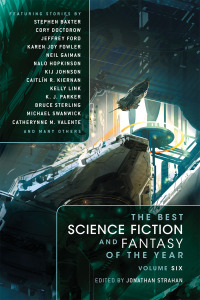Beautiful Thing by Sonia Faleiro
 Monday, March 19, 2012 at 4:04AM
Monday, March 19, 2012 at 4:04AM First published in India in 2010; published by Black Cat on February 28, 2012
Subtitled Inside the Secret World of Bombay's Dance Bars, Beautiful Thing grew out of an article Sonia Faleiro wrote about Mumbai's "bar dancers" that was never published because it wasn't considered newsworthy (perhaps because the bars were officially banned in 2005). It is true that Faleiro's subject isn't groundbreaking, yet the world she investigated -- a world she found fascinating and intimidating even as it left her "feeling frustrated and hopeless" -- deserves to publicized, if only to illuminate the impact of poverty on women who live in a culture of limited options.
Faleiro sketches the hierarchy of sex workers in Mumbai, from the waitresses in a Silent Bar who provide manual relief while serving drinks and tandoori, to brothel workers, to call girls and massage parlor employees. Bar dancers reside at the top of the heap, in part because they sell sex discreetly and infrequently (and thus do not consider themselves to be sex workers), while facing many of the same challenges: paying bribes to the police to avoid being brutalized by their cattle prods; working for violent employers; enduring rude comments and the judgment of a society that regards their profession as impure. Still, by dancing for men, bar dancers gain freedom they could not otherwise enjoy. They do not have to live at home, under the domineering rules of fathers or husbands. They can speak to men to whom they are not related without fear of punishment. Their customers think the bar dancers are dancing for them, but according to Leela (the dancer with whom Faleiro spent tbe most time), the customers are dancing for the bar girls: exchanging money for an insincere smile, rewarding cheesy lines from Bollywood romances with lavish shopping trips, forsaking loving wives for the illusion of a satisfied lover.
Most of the book consists of stories that Leela and other bar dancers told Faleiro about their lives. Faleiro also interviews customers, bar owners, pimps, and a transgender hijra. Faleiro reports the stories told by bar dancers uncritically, without noting that tales of woeful pasts (rapes by their fathers and sons and cousins and strangers) told by women who are ashamed of their profession, as well as tales of success (the power they wielded over men who adored them) may not be entirely true. This seems particularly likely in Leela's case; her smug, self-centered nature is not conducive to honesty. Still, it is certain that the women Faliero interviewed endured horrid lives before they became sex workers, even if they might exaggerate the horror when they chat with a sympathetic listener. Although Leela is more than a little annoying, it would be impossible to read this book without feeling empathy for the abused women in Mumbai and anger at, not just the abusers, but the people in their lives who do nothing to help because they regard the violent behavior of men as none of their business.
Faleiro paints a bleak picture of Mumbai, one that is filled with gangsters and petty criminals rather than Bollywood celebrities. She describes a city ruled by corruption. She attempts to explain why men seek out bar dancers and how the dancers become obsessed with the unlikely hope of romantic love and marriage as the only means of erasing the stigma of their profession. In a chapter that showcases the book's strongest writing, Faleiro interviews a woman who has been diagnosed with HIV Wasting Syndrome and talks to Leela about what will happen to the woman's child.
Beautiful Thing has its flaws. Faleiro often leaves Hindi words and expressions untranslated, and while the meaning is frequently apparent from the context, I still felt I was guessing. An appendix with a glossary of Hindi words translated to English would have been a useul addition to the book. At some point, the stories begin to sound the same; there is too little to differentiate them from each other. Beautiful Thing has the feel of a lengthy magazine article that has been fleshed out to fill the pages of a book.
The second part of the book addresses the 2005 ban on dance bars, a cynical attempt to distract voters from the city's underlying problems (poverty chief among them) by focusing on illusory "quality of life" issues. (Perhaps the politicians in Mumbai learned from Rudi Giuliani, whose war on petty crime in New York City during the 1990s coincided with a spike in unemployment.) Far from improving the quality of life in Mumbai, the ban increased the city's population of destitute women by throwing the bar dancers out of work, placing the women at increased risk of disease and sexual assault. Leela did not fare well after she lost her job as a bar dancer, although there are always places for a sex worker to find employment. As this section of the book illustrates, the real story here is not that poor and abused women turn to sex work, but that poverty and abuse are so often ignored or tolerated by people of means. Beautiful Thing reports nothing new, but the reporting is nonetheless worthy of attention.
RECOMMENDED



